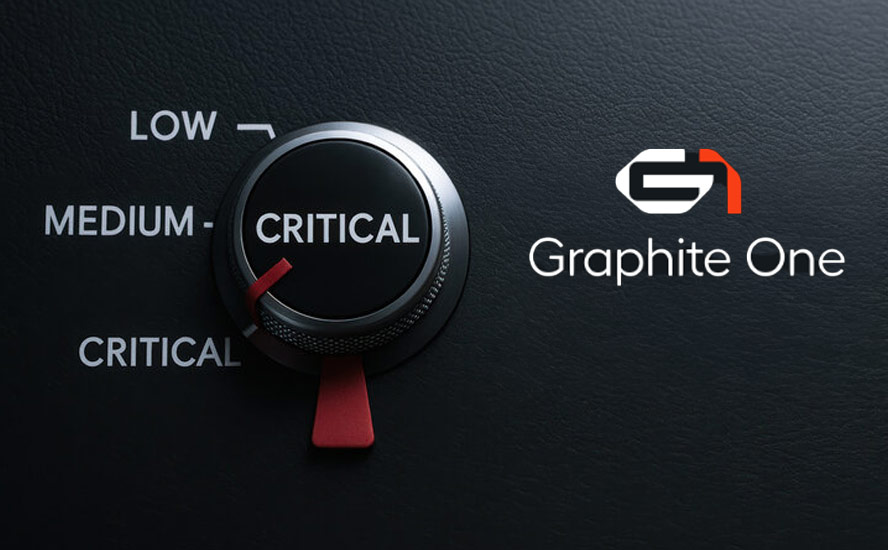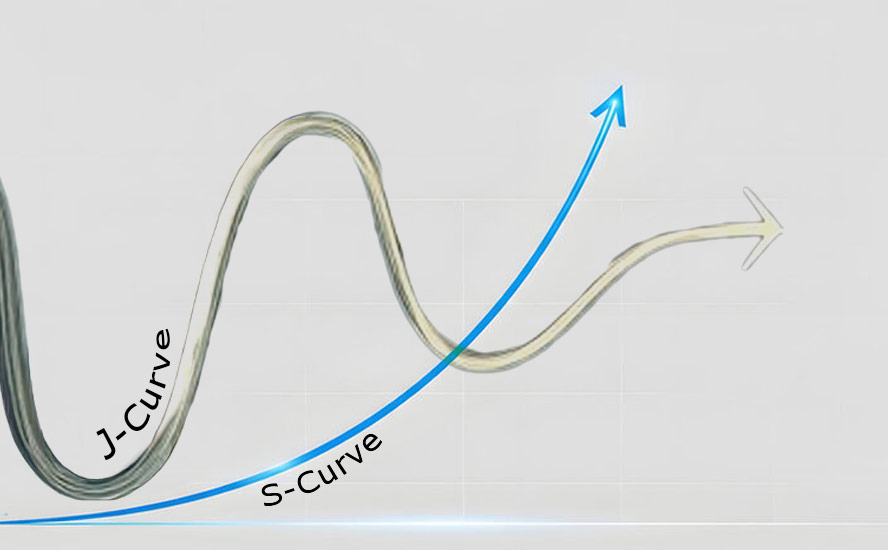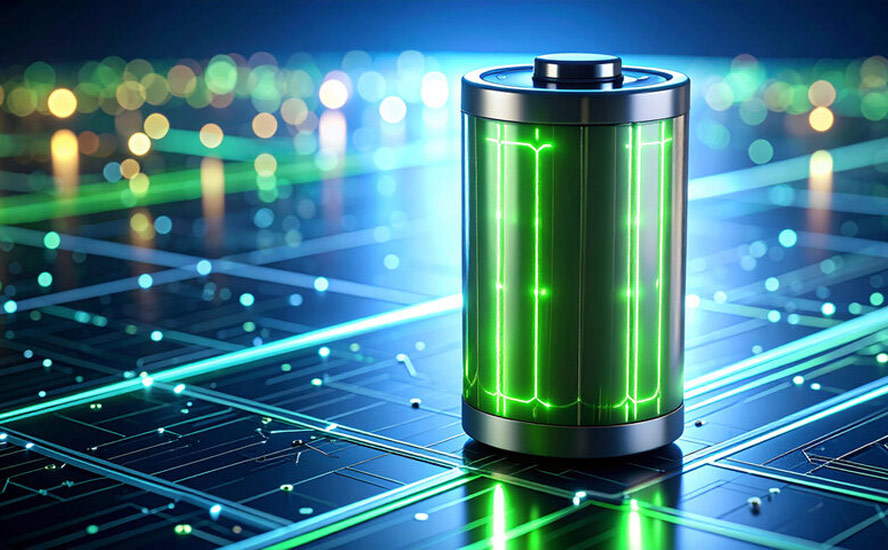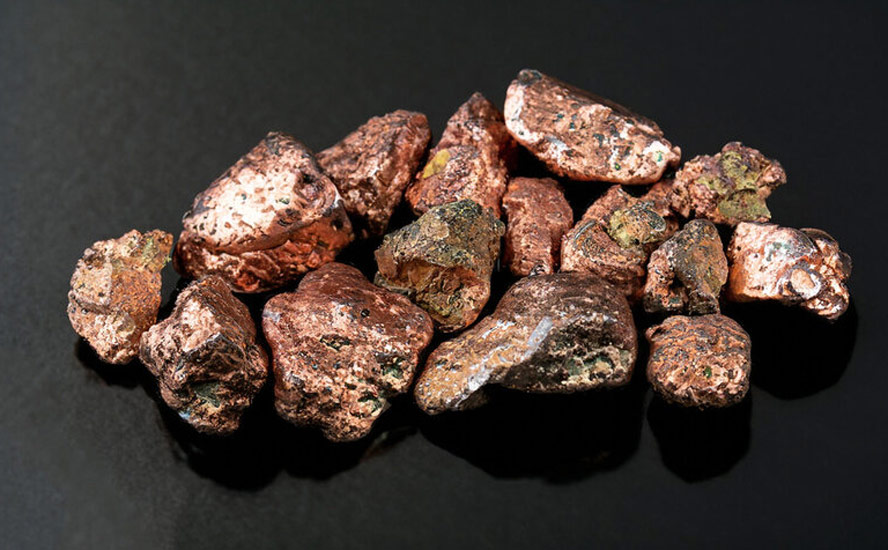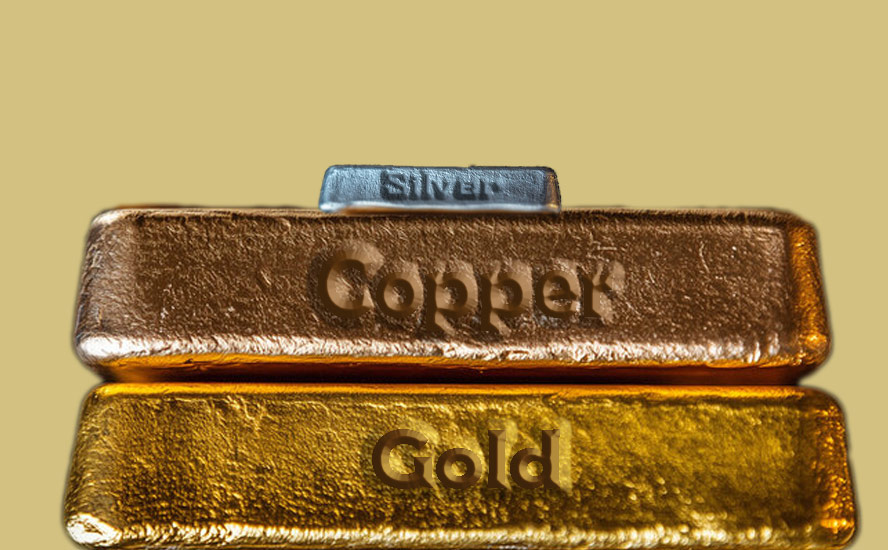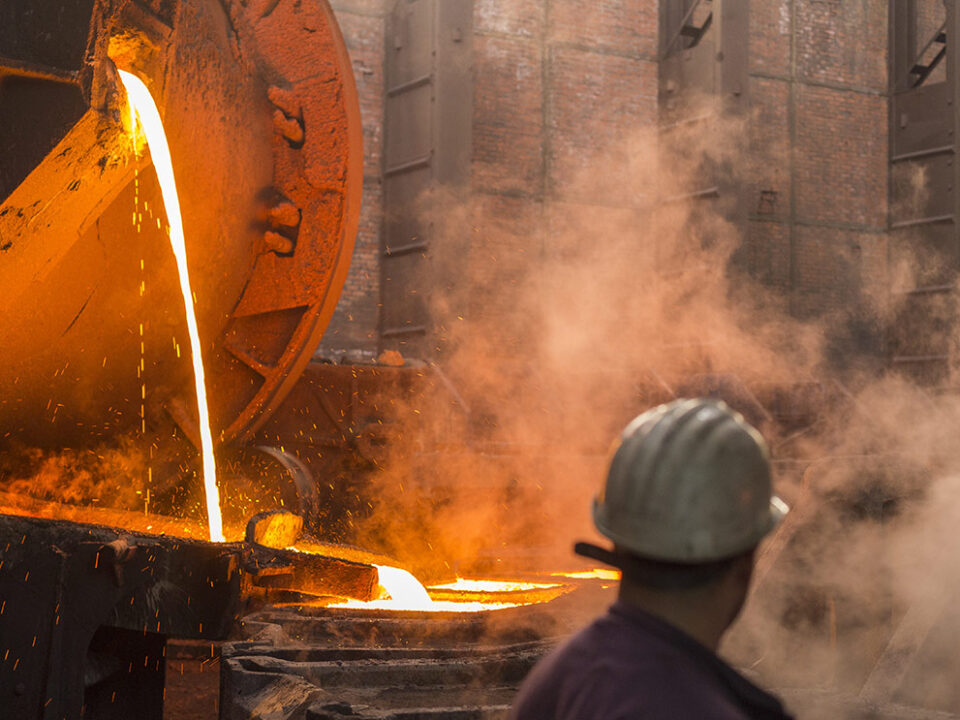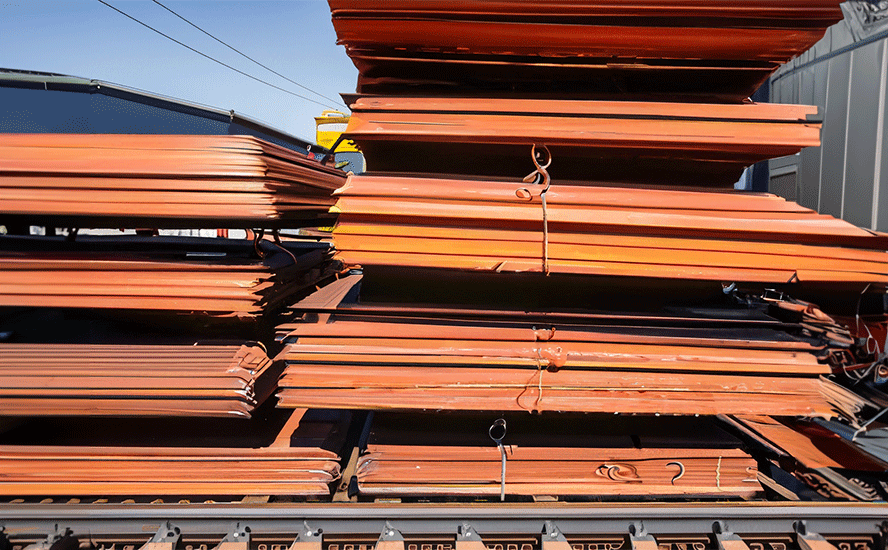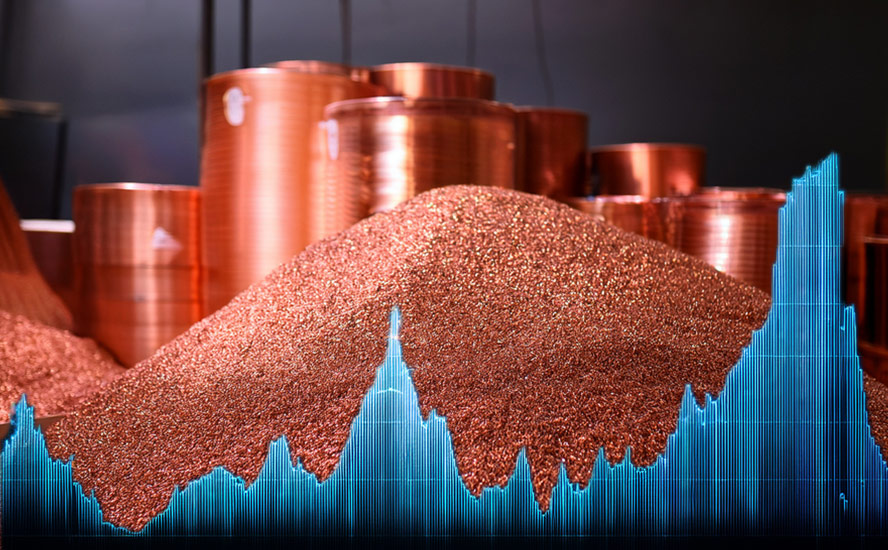The future of US lithium supply
2021.05.28
“The world’s future energy course is being charted today because of the ramifications of peak oil and a need to reduce our carbon footprints.
A whole new industry – a global wide automotive and industrial lithium-ion battery industry – is going to be built.” April 17th 2010, Richard Mills, aheadoftheherd.com
According to the most recent report from Wood Mackenzie, mining companies will need to spend $1.7 trillion over the next 15 years, to supply enough lithium, graphite, cobalt, copper and nickel for the shift to a low-carbon world.
The commodities consultancy says meeting new emissions targets being set by countries like Canada, the US, Britain and Japan, will mean large-scale deployment of electric vehicles, renewable power and electrical transmission, all of which will require copious metal content.
A North American EV supply chain, from mine-site to showroom, is still in its infancy, but progress is being made. In April CNBC reported that General Motors and South Korean battery-maker LG Chem will invest over $2.3 billion in a second EV battery plant, in Tennessee.
Other large automakers and battery companies are jumping on the EV train, including Ford Motor Co. and SK Innovation. The latter and LG Chem recently struck a $1.8 billion deal to end a trade dispute between them, allowing SK to finish building a lithium-ion battery plant in Georgia, that will supply batteries to Ford and Volkswagen.
Rising demand for lithium is stoking prices for the white metal, and padding the bottom lines of large producers like Albemarle and Livent Corp.
Prices climbing
According to Benchmark Mineral Intelligence, an index of lithium prices has climbed 59% since April 2020, prompting Albemarle, Livent and Chile’s SQM, to increase production.
A few years back this led to a glut in the market and a period of low prices, but lithium CEOs and analysts expect it to be different this time.
Paul Graves, the CEO of Livent, which supplies Tesla, was quoted saying the rising demand “reflects what feels like a real and fundamental turning point in our industry.” However, he also warned that “it will be a challenge for the lithium industry to produce sufficient qualified material in the near and medium term.”
Chris Berry, an independent battery metals expert, told Reuters, “The next few years are going to be critical in terms of whether there’s enough available lithium supply, and that’s why you’re starting to see commodity prices start to ramp.”
Benchmark forecasts lithium demand to more than triple between 2020 and 2025, rising to a million tonnes by the forecast year and out-pacing supply by 200,000 tonnes.
“Companies across the lithium-ion supply chain are in the best position they’ve been in for the last 5 years,” Reuters quoted Pedro Palandrani of the Global X Lithium & Battery Technology ETF, which has doubled in value in the past year.
Fitch Solutions also expects lithium prices to trend higher this year, and next, due to a combination of accelerating demand for lithium-ion batteries, and tight supply. So far in 2021 prices have rallied, as post-covid demand for the battery metal recovers, alongside the automotive industry.
(Chinese EV sales more than tripled in January compared to a year earlier while in Europe, sales of battery-, hybrid-, and biofuels-powered cars beat diesel vehicle sales for the first time and now account for a third of new passenger cars, the Wall Street Journal reported in March.)
Fitch sees Chinese lithium carbonate 99.5% averaging $13,450 per tonne in 2021 and $15,025/t in 2022. Chinese lithium hydroxide prices are also heading higher, to an average $11,950 in 2021 and $14,300 in 2022.

Lithium supply and demand
Most of the demand growth for lithium will obviously come from lithium-ion batteries which is the current and future technology for electric vehicles.
According to Roskill, electric and hybrid vehicles represented over 70% of lithium demand in 2020, a market share that is expected to increase over the next decade. By 2031, the consultancy believes demand will exceed 2 million tonnes of lithium carbonate equivalent (LCE), an amount that will require “fundamental changes in the scale and types of lithium projects in operation to meet.” Last year lithium demand only reached 320,000 tonnes.
The Roskill report states:
The outlook for the lithium market is dominated by rapid and sustained demand growth, driven by the use of Li-ion batteries in automotive and ESS [energy storage systems] applications. This will require an equally significant build-out and commissioning of new capacity to support. It is expected that fundamental changes in operation size and the range of lithium production sources will be needed to meet forecast demand growth and avoid a growing supply deficit, which would likely result in demand destruction, substitution or thrifting of lithium from key end-use markets. For this to succeed, producers will require adequate lithium compound prices to attract
investment and incentivise the develop of lithium resources, a factor which is expected to see lithium prices well supported over the period to 2031.

Regarding electric vehicles, the most important demand driver for lithium, Fitch predicts EV sales to reach over 4.6 million units in 2021. That is 50% more than 2020 which in turn was 36.8% higher than 2019. (despite total passenger vehicle sales falling last year by 20% due to the pandemic)
Australian bank Macquarie forecasts a global EV penetration rate of 16% by 2025 (battery electric vehicles and plug-in hybrids combined), and by 2030, 30% globally and 41% in China — a scenario that would push spodumene (hard rock) prices above $720 a tonne, lithium carbonate above $13,000/t, and lithium hydroxide over $16,000/t.
Utility-scale batteries that store renewable energy, and portable electronics will also contribute to demand, with China top of the heap for battery manufacturing and Germany and the US increasing battery production capacity in the coming years, says Fitch. (of 142 battery plants worldwide, 109 are in China — a capacity share of more than 70%)
By 2025 installed battery production capacity is expected to increase by over 300%, mainly due to the acceleration of vehicle electrification in Europe.

According to Climate Change News, the region is on schedule to meet demand for rising electric vehicle sales, with five major battery factories in operation and at least 11 more expected by the end of the decade.
Leading the charge, pun intended, is Volkswagen, with a planned six gigafactories of battery cell production by 2030, and a goal of doubling its EV sales as it tries to close the gap with market leader Tesla.
(CEO Elon Musk in 2019 revealed that its European gigafactory would be located in Germany, not the UK, due to Brexit-related uncertainty, however recently there has been speculation that Tesla will choose a UK site for another gigafactory. It has also been rumored that Nissan is negotiating with the UK government over plans to build an EV plant as part of an official push to make Britain the company’s largest production hub outside Japan, according to the Financial Times.)
Thanks to a $14 billion order to its Swedish partner, Northvolt, the German automaker says it will cut its battery cell costs in half by the target date. VW also plans on spending €400 million to build and operate a fast-charging network of >18,000 chargers, with deals already in place in Italy and Spain, according to Forbes.
Another significant European battery deal was inked last September, when French major oil company Total and carmaker Groupe PSA joined forces in launching the Automotive Cells Company (ACC). ACC could see two gigafactories built in France and Germany, in a €5 billion investment expected to be functional this year.
Electrification in Europe is being supported by the European Investment Bank, which has provided more than €400 million to Swedish startup Northvolt and backed an LG Chem facility in Poland with another €480 million.
In the United States, there are a number of battery plants in the works to join Tesla, whose first gigafactory in Nevada started production of battery cells in 2017. The company has a plant in Buffalo, New York, and plans to open a third (US plant) in Texas by the end of this year. Tesla also has a “pilot line” at its facility in Fremont, California, for R&D technologies.
In 2020 General Motors announced plans to install its first battery cell factory in Ohio, a project called Ultium Cells launched with its Korean partner LG Chem. The latter opened a plant in Holland, Michigan in 2013.
Another South Korean company, SK Innovation, is planning on opening the first of two battery plants in Georgia this year; the company is a supplier to Volkswagen and Ford.
The latter along with American auto icon GM have big plans to electrify their fleets. This week Ford announced plans to boost spending on electrification by more than a third, and aims to have 40% of its global volume electric by 2030, which translates to more than 1.5 million EVs based on last year’s sales.
GM reportedly aspires to halt all sales of gas-powered vehicles by 2035, with plans to invest $27 billion in electric and autonomous vehicles over the next five years.
A senior analyst with GlobalData said worldwide EV sales are expected to surge from 3.4 million in 2020 to 12.7 million in 2024, with a corresponding four-fold rise in battery production from 95.3 gigawatt hours (GWh) in 2020 to 410.5 GWh over the same period.

Since January, a May 2 Reuters story notes, General Motors and Ford, Korea’s LG Energy Solution and SK Innovation, along with other automakers and battery parts manufacturers, have said they will spend billions of dollars on EV plants.
Joe Biden’s $1.7 trillion infrastructure bill includes $174 billion to boost EV sales and infrastructure, and the European Union has similar plans, as both attempt to catch up with China, by far the global leader in EV sales and manufacturing.
Looming deficit
The question is, with all of this growth in battery plants and electric vehicles coming, will supply manage to keep up?
Noting that lithium demand has “flipped 180 degrees in five years,” from 32% demanded by lithium-ion batteries in 2015, to 67% in 2020, Simon Moores of Benchmark Mineral Intelligence predicts a structural deficit could occur as early as later this year and increase to 120,000 tonnes in 2022.
Another market analysis firm, CRU, foresees 2021 lithium demand of about 450,000 tonnes will exceed supply by around 10,000 tonnes.

A December 2020 Forbes article quotes investment bank UBS stating that at today’s prices, lithium “might run out by 2025.”
The story notes that EV parity — the point when the prices of EVs match regular vehicles — is expected to be reached by 2024, removing a major roadblock to EV penetration. For this reason, UBS projects EVs will make up nearly half of new car sales by 2030, as shown in the chart below.

The upshot is that in the next nine years, UBS analysts estimate the lithium market will grow by 8X, resulting in supply being unable to keep up with swelling demand:
“There is not sufficient supply to meet this demand projection based on our knowledge of known projects today. That includes all projects whether they are under construction, in feasibility or still in exploration,” wrote Glyn Lawcock, global head of mining research, in the report.

Supply sources
Where are we going to find all the lithium to meet skyrocketing demand?
Currently there are two primary means of extracting lithium: from brines in evaporated salt lakes known as salars, and hard rock mining, where the lithium is mined from pegmatite orebodies containing spodumene, apatite, lepidolite, tourmaline and amblygonite. A third, new method is claystone mining, discussed in detail below.
Lithium ABC’s
The Puna plateau sits at an elevation of 4,000m, stretches for 1800 km along the Central Andes and attains a width of 350–400 km. The Puna covers a portion of Argentina, Chile and Bolivia and hosts an estimated 70 – 80% of global lithium brine reserves.
The evaporate mineral deposits on the plateau – which may contain potash, lithium and boron – are formed by intense evaporation under hot, dry and windy conditions in an endorheic basin – endorheic basins are closed drainage basins that retain water and allow no outflow – precipitation and inflow water from the surrounding mountains only leaves the system by evaporation and seepage. The surface of such a basin is typically occupied by a salt lake or salt pan. Most of these salt lakes – called salars – contain brines which are capable of providing more than one potentially economic product.
This Puna Plateau area of the Andean mountains – where the borders of Argentina, Bolivia and Chile meet and bounded by the Salar de Atacama, the Salar de Uyuni and the Salar de Hombre Muerto – is often referred to as the Lithium Triangle and the three countries mentioned are the Lithium ABC’s.
The salt rich brines are pumped from beneath the crust that’s on the salar and fed into a series of large, shallow ponds. Initial 200 to +1,000 parts per million (ppm) lithium brine solution is concentrated by solar evaporation and wind up to 6,000 ppm lithium after 18 – 24 months.
The extraction process is low cost/high margin and battery grade lithium carbonate can be extracted. The cost-effectiveness of brine operations forced even large producers in China and Russia to develop their own brine sources or buy most of their needed raw materials from brine producers.
The key factors that determine the quality, economics and attractiveness of brines are:
- Potassium content
- Lithium content
- Presence of contaminants ie magnesium (Mg)
- Porosity
- Net evaporation rate
- Recoverable by-products
- Infrastructure – or lack thereof
- Country risk
- 100% control over production
- Low capex, low production costs, high margin products
Contributing to efficient solar evaporation and concentration of the Puna Plateau brines are:
- Low rainfall
- Low humidity
- High winds
- High elevations
- Warm days
When lithium chloride reaches optimum concentration – using nothing more than sun and wind – the liquid is pumped to a recovery plant and treated with soda ash, precipitating lithium carbonate. The carbonate is then removed through filtration, dried and shipped.

The above diagram was designed to show that several commercial products can be recovered from typical brine and that the recovery takes place in a series of steps over the entire evaporation process. Note that the final product in each step may require processing in a specialized plant. Also please note that the actual sequence of process steps may vary from brine to brine, and as such, the process steps shown above may not be in the correct order for any specific brine.
Pegmatites
In the case of production from pegmatites the process is:
- Mining
- Concentration to a higher grade
- Calcination at 1100 degrees Celsius to produce acid-leachable beta spodumene
- Treated with sulphuric acid at 250 degrees Celsius
- conversion of the lithium sulphate solution with sodium carbonate
Extracting lithium from spodumene requires a whole range of hydrometallurgical processes. The ore is first crushed and heated in a kiln to create a spodumene concentrate, which is then cooled and milled into a fine powder. It is then mixed with sulfuric acid and roasted again, before waste is separated from the concentrated liquor, and magnesium and calcium are precipitated out. Finally soda ash and lithium carbonate are crystallized, heated, filtered, and dried, creating 99% lithium carbonate.
Future supply restricted
According to the above-mentioned Roskill report, the supply of lithium compounds has the potential of restricting the growth of EV sales and production.
The report states that lithium hard rock was the predominant source of lithium feedstock in 2020, accounting for 53% of supply. The 6% lithium raw ore is shipped to China and upgraded (a lot of it isn’t battery-grade, it’s industrial grade).
Other sources were largely lithium brine operations in South America.
Though its evaporation rate is only about 72 percent of Atacama’s, Salar de Hombre Muerto is still commercially successful because costs are low and are further offset by the sale of recoverable by-products like boric acid.
The Salar de Uyuni (Bolivia) has the lowest average grade of Li at .028 and has an extremely high ratio of Mg/Li at 19.9.
(A common industry axiom says that the ratio of Mg to Li in brines must be below the range of 9:1 or 10:1 to be economical. This is because the Mg has to be removed by adding slaked lime to the brine – the slaked lime reacts with the magnesium salts and removes them from the water. If the ratio is 1:1 in the original brine, then the added cost (due to today’s present cost per tonne of slaked lime) is $180/tonne of lithium carbonate produced. If the Mg to Li is 4:1 than the cost of removing magnesium is $720.00 per tonne of lithium carbonate.)
A major factor affecting capital costs is the net evaporation rate – this determines the area of the evaporation ponds necessary to increase the grade of the plant feed. These evaporation ponds can be a major capital cost. The Salar de Atacama has higher evaporation rates (3200 mm pan evaporation rate per year (py) and <15 mm py of precipitation) than other salt plains in the world and evaporation takes place all year long.
Uyuni’s higher rainfall and cooler climate means that its evaporation rate is not even half that of Atacama’s. The lithium in the Uyuni brine is not very concentrated and the deposits are spread across a vast area. Bolivia also has limited infrastructure – compared to that of Chile, Argentina or the US – and they lack free access to the sea.
At least some of future production will come from existing lithium mines. Albemarle, the world’s top producer and owner of the Silver Peak lithium mine in Nevada, aims to double its production capacity to 175,000 tonnes by the end of this year.
No. 2 producer SQM from Chile, said its goal is to expand production of lithium carbonate by 70% this year, to 120,000 tonnes, while Australia’s Orocobre is paying $1.4 billion to acquire smaller rival Galaxy Resources, as part of a strategy to boost scale, states a recent Reuters article.
The largest source of Chilean lithium is the Salar de Atacama.
One of the hottest, driest, windiest and most inhospitable places on Earth, the Atacama is ideal for lithium mining because the lithium-containing brine ponds evaporate quickly and the solution is concentrated into high-grade lithium products like lithium carbonate and lithium hydroxide used in EV batteries.
The Atacama is the world’s highest-grade and largest-producing lithium brine deposit — responsible for supplying a third of the world’s lithium.
While Chile will undoubtedly play a major role in shipping lithium carbonate and hydroxide to electric vehicle battery makers, the center of the world’s lithium brine production is making it tough for lithium miners, especially foreign companies, to ramp up production.
Chile’s lithium industry depends on pumping huge volumes of brines from beneath the Salar de Atacama, then evaporating it to create lithium carbonate and lithium hydroxide.
But miners’ ability to get enough water for their operations is being challenged by environmentalists, farmers and the authorities, who say the actions of large companies like SQM, the state-owned lithium miner, and Albemarle, are damaging the environment and shrinking water supplies.
SQM and Albemarle for years have blamed each other for over-exploiting their water rights in the Salar de Atacama, where they operate just 20 km apart. The Chilean government, fearing a water shortage, in 2018 put restrictions on water use in the salar.
So future, increased lithium supply, is unlikely to come from South American brine operations. Chile’s water problems and a recent surge in resource nationalism, including a plan by leftists to rewrite the constitution and tilt power towards indigenous communities that want more water rights and bans on mining, mean planned supply increases are unlikely to materialize.
Argentina has a basket-case economy that makes it too risky for foreign miners to invest in. There is currently no lithium produced in Bolivia, despite hosting the Salar de Uyuni salt flats, estimated to contain over a quarter of the world’s known reserves. Along with being a poster child for resource nationalism, the lithium grades and evaporation rates in Bolivia aren’t as good as the Atacama, and the material is heavily contaminated with magnesium, an impurity that must be removed.
Lithium extracted from oilfield brines is a relatively new source but a lot of these wells are 4,000 meters deep and heavily contaminated with magnesium and other impurities. There would also need to be a piping system to connect and pump the brines from all the different wells in the well field, then truck it to a central processing plant where the cost to remove the contaminants using natural gas is very high.
So where is all the new lithium supply to come from? At AOTH we believe lithium claystones in Nevada and pegmatites in northern Quebec, home also to large graphite and Rare Earth reserves, will play a huge part in meeting the needs of the US and Canada’s mine to battery to EV charge.
Clay extraction, a lithium game-changer
The challenge with claystones is that many of them contain hectorite which, like magnesium, is an impurity that must be removed.
When I first started writing about lithium, more than a decade ago, the process for extracting lithium from claystones and removing the hectorite was very expensive and time-consuming.
On top of that, there were more than enough lithium brines to satisfy market demand. As proven in the article above how times have changed in regards to demand and supply. Fact is we need new sources of lithium, ones that are not South American or Australian/China based.
The discovery of lithium rich, on surface, non-hectorite clays in Nevada’s Clayton valley is a game changer for the lithium extraction industry.
Because of the ongoing electrification of the global transportation system, and the massive effort to reduce our carbon footprint on the planet this is a sea change, as big a sea change for the lithium extraction industry as the commercialization of heap leaching was for the recovery of gold, which forever altered the gold industry.
Cypress Development Corp.
The first mover is Cypress Development Corp (TSXV:CYP, OTCQB:CYDVF), whose Clayton Valley Lithium Project
Cypress’ project has a pit-constrained mineral resource of 432.4 million tonnes averaging 1,088 parts per million (ppm) Li in the measured category and 160.9 million tonnes at 1,032 ppm Li in indicated, for a total of 593.3 million tonnes at 1,073 ppm Li (measured and indicated). The amount of lithium contained in the pit-constrained M&I resource totals 636.4 million kg, or 3.387 million tonnes of lithium carbonate equivalent (LCE).
An average production rate of 15,000 tonnes per day to produce 27,400 tonnes LCE annually over a +40-year mine life means Cypress’s lithium project stacks up extremely well against any of the 10 deposits listed here.
The proposed mine would produce an average 27,400 tonnes of LCE a year and have a mine life of +40 years. The mine would be neither a hard-rock nor a lithium brine operation, but rather, would process the lithium from claystones in Nevada’s Clayton Valley by leaching the material with hydrochloric acid.

By 2030, the demand for lithium products is estimated to grow to 1.6 million tonnes a year, of which 1.4Mt is for lithium hydroxide. That’s exactly the product Cypress would want to position itself as a supplier of making itself attractive to an EV manufacturer like Tesla. Current global lithium production is only around 500,000 tonnes of LCE.
At a cash operating cost of $3,329 per tonne LCE, the company stands to make a profit of $7,171/tonne, if lithium sells for $10,500/t.
That makes Cypress among the lowest-cost producers, and in my opinion, the best value within a small group of advanced-stage lithium projects in the United States.
Moreover, Cypress discovered mid-way through the prefeasibility study period that hydrochloric acid rather than more expensive sulfuric acid could be used, shaving even more off the already-low processing costs.
Cypress’ Clayton Valley Lithium Project has the size and scalability to interest a large mining company like Albemarle, a major EV automaker like Tesla, or a world-class battery-maker like SK Innovation, developing a large facility in the southern United States. The proof in the pudding for a major taking a serious look at Cypress, will be the mine’s ability to scale up.
To offer this proof, Cyprus is designing a pilot plant capable of continuous production of at least one tonne per day of claystone, for a month. If that test phase is successful, ie., if the flow sheet works and the lithium hydroxide finished product is acceptable, then a potential acquirer could envision 5 tonnes per day, or 20 tpd, whatever production rate is required.
According to Cypress’ May 20 update, the plant is on schedule to be fully operational by July, and the company has hired Chemionex Inc., an Ontario-based company specializing in hydrometallurgical processes, to advise on the direct lithium extraction (DLE) section of the plant.
Conclusion
If Cypress is able to prove, at its pilot plant, that it can make lithium hydroxide at reasonable cost, and can scale it up, it will be a huge coup for the company and will shift the goal posts for the lithium industry, potentially putting several previously questionable lithium claystone deposits into the money and on a pathway to production, at a time when the lithium industry is in dire need of finding a way to add significantly more supply to balance out explosive demand for battery-grade lithium.
I believe the future of lithium supply, particularly for the US, is neither South American lithium brines, nor spodumene deposits Down Under, but lithium hydroxide produced right in Nevada, the top global mining jurisdiction according to the last Fraser Institute Survey, from claystone deposits that are proving to be extremely amenable to low-cost leaching processes, that potentially can also drop out valuable by-products, including rare earths. If Cypress is successful in moving its project forward to production, the size of the deposit would likely set the price of lithium hydroxide, or significantly influence it, for many years to come.
Richard (Rick) Mills
aheadoftheherd.com
subscribe to my free newsletter
Legal Notice / Disclaimer
Ahead of the Herd newsletter, aheadoftheherd.com, hereafter known as AOTH.
Please read the entire Disclaimer carefully before you use this website or read the newsletter. If you do not agree to all the AOTH/Richard Mills Disclaimer, do not access/read this website/newsletter/article, or any of its pages. By reading/using this AOTH/Richard Mills website/newsletter/article, and whether you actually read this Disclaimer, you are deemed to have accepted it.
Any AOTH/Richard Mills document is not, and should not be, construed as an offer to sell or the solicitation of an offer to purchase or subscribe for any investment.
AOTH/Richard Mills has based this document on information obtained from sources he believes to be reliable, but which has not been independently verified.
AOTH/Richard Mills makes no guarantee, representation or warranty and accepts no responsibility or liability as to its accuracy or completeness.
Expressions of opinion are those of AOTH/Richard Mills only and are subject to change without notice.
AOTH/Richard Mills assumes no warranty, liability or guarantee for the current relevance, correctness or completeness of any information provided within this Report and will not be held liable for the consequence of reliance upon any opinion or statement contained herein or any omission.
Furthermore, AOTH/Richard Mills assumes no liability for any direct or indirect loss or damage for lost profit, which you may incur as a result of the use and existence of the information provided within this AOTH/Richard Mills Report.
You agree that by reading AOTH/Richard Mills articles, you are acting at your OWN RISK. In no event should AOTH/Richard Mills liable for any direct or indirect trading losses caused by any information contained in AOTH/Richard Mills articles. Information in AOTH/Richard Mills articles is not an offer to sell or a solicitation of an offer to buy any security. AOTH/Richard Mills is not suggesting the transacting of any financial instruments.
Our publications are not a recommendation to buy or sell a security – no information posted on this site is to be considered investment advice or a recommendation to do anything involving finance or money aside from performing your own due diligence and consulting with your personal registered broker/financial advisor.
AOTH/Richard Mills recommends that before investing in any securities, you consult with a professional financial planner or advisor, and that you should conduct a complete and independent investigation before investing in any security after prudent consideration of all pertinent risks. Ahead of the Herd is not a registered broker, dealer, analyst, or advisor. We hold no investment licenses and may not sell, offer to sell, or offer to buy any security.
Richard owns shares of Cypress Development Corp. (TSX.V:CYP).
Legal Notice / Disclaimer
Ahead of the Herd newsletter, aheadoftheherd.com, hereafter known as AOTH.Please read the entire Disclaimer carefully before you use this website or read the newsletter. If you do not agree to all the AOTH/Richard Mills Disclaimer, do not access/read this website/newsletter/article, or any of its pages. By reading/using this AOTH/Richard Mills website/newsletter/article, and whether you actually read this Disclaimer, you are deemed to have accepted it.











